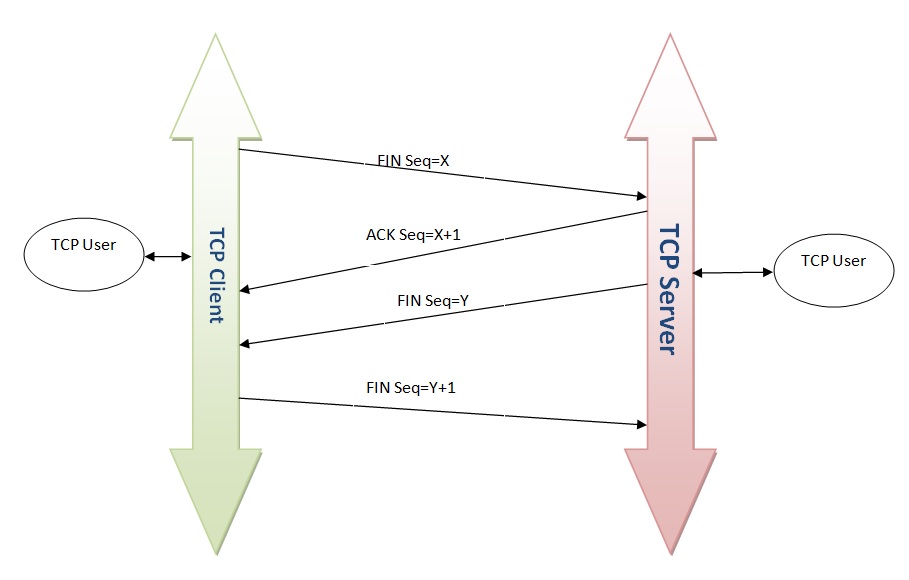TCP (Transmission Control Protocol) session termination is the process of gracefully closing a TCP connection between two devices. This ensures that both devices acknowledge the end of communication and that no further data will be exchanged. Let’s explain TCP session termination with the help of an example and a diagram:
Diagram of TCP Session Termination:

Explanation of TCP Session Termination:
Step 1: FIN (Finish) – Computer A to Computer B:
- When Computer A (the client) decides to terminate the connection, it sends a TCP packet with the FIN flag set. The packet includes its sequence number, let’s say 1000.
- This FIN packet indicates that Computer A has finished sending data.
Step 2: ACK (Acknowledge) – Computer B to Computer A:
- Upon receiving the FIN packet from Computer A, Computer B (the server) acknowledges it by sending a TCP packet with the ACK flag set. The acknowledgment includes an acknowledgment number, in this case, 1001, which is the sequence number of Computer A’s FIN packet plus 1.
- This acknowledges that Computer B has received Computer A’s FIN and is ready to terminate the connection.
Step 3: FIN (Finish) – Computer B to Computer A:
- Computer B also decides to terminate the connection and sends a FIN packet to Computer A. This FIN packet includes Computer B’s sequence number, let’s say 2000.
- This indicates that Computer B has finished sending data.
Step 4: ACK (Acknowledge) – Computer A to Computer B:
- Finally, Computer A acknowledges Computer B’s FIN packet by sending a TCP packet with the ACK flag set. The acknowledgment includes an acknowledgment number, in this case, 2001, which is the sequence number of Computer B’s FIN packet plus 1.
- This acknowledges that Computer A has received Computer B’s FIN and is ready to terminate the connection.
After this four-step process, the TCP session is gracefully terminated. Both devices have confirmed the end of communication, and the connection is closed. No further data will be exchanged over this connection.
Example of TCP Session Termination:
Imagine you are downloading a file from a web server. Once the file transfer is complete, your web browser (Computer A) and the web server (Computer B) perform the TCP session termination to close the connection gracefully. This ensures that both sides understand the end of the data transfer and that the connection resources are released for other uses.
